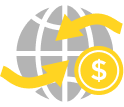Overview In 2022, Pakistan was the number 41 economy in the world in terms of GDP (current US$), the number 66 in total exports, the number 49 in total imports, the number 155 economy in terms of GDP per capita (current US$) and the number 85 most complex economy according to the Economic Complexity Index (ECI) .
Exports The top exports of Pakistan are House Linens ($4.86B), Rice ($2.55B), Non-Knit Men's Suits ($2.53B), Knit Sweaters ($2.01B), and Refined Petroleum ($1.56B), exporting mostly to United States ($6.47B), Germany ($2.8B), China ($2.79B), United Arab Emirates ($2.58B), and United Kingdom ($2.41B).
Imports The top imports of Pakistan are Refined Petroleum ($6.98B), Crude Petroleum ($5.23B), Petroleum Gas ($4.58B), Palm Oil ($3.8B), and Raw Cotton ($2.44B), importing mostly from China ($21B), United Arab Emirates ($5.8B), Indonesia ($4.55B), Saudi Arabia ($4.5B), and Kuwait ($3.97B).
In 2022, Pakistan was the world's biggest importer of Sulfonated, Nitrated or Nitrosated Hydrocarbons ($822M), Tea ($707M), Used Clothing ($250M), and Metallic Yarn ($28M)
Location Pakistan borders Afghanistan, China, India, and Iran by land and Oman by sea.




